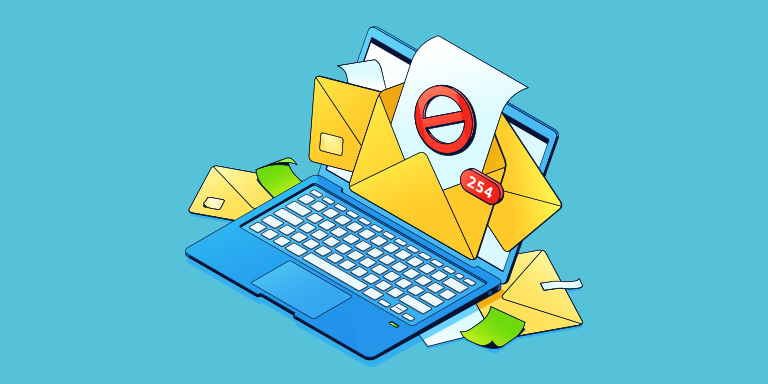If you’re an aspiring entrepreneur holding down a day job, you’re probably itching for the right time to go all in and become your own boss. But there’s a right and a wrong way to take that leap.
Starting your own business is risky, after all. True, every entrepreneur will stumble at some point in their career, but the last thing you want to do is charge out of the gates and fall flat on your face.
Fortunately, there’s a lot you can do to maximize your chances of success, long before starting your business, and all while you maintain the security of your day job.
In fact, a study from the Academy of Management showed that entrepreneurs who kept their day jobs failed 33% less often than those who jumped right into self-employment. Furthermore, according to CB Insights, the top reason startups fail is a lack of market need.
That means that in order to answer that burning question, “Will I be successful in business?” the number one thing you’ll want to do is test and validate your idea. But how do you do that?
Here are five steps you can take to make sure your business idea has a solid chance of success, before taking the plunge and leaving your day job:
EXCLUSIVE FREE TRAINING: Successful Founders Teach You How to Start and Grow an Online Business
1. Build Interest and Capture Emails with Landing Pages
Every business needs a website. And unless you plan on opening a business that is strictly brick and mortar (e.g., a restaurant—which, by the way, will still need a website), you can use the power of landing pages to measure interest in your business idea.
A landing page is a standalone web page that a visitor lands on after clicking an ad, such as on Facebook or Twitter, or through Google search.
What’s great about a landing page (or a series of landing pages—more on that in a second) is that you don’t actually need to create your product, app, tool, or whatever your business is based on in order to test demand for it. Just tell people what your product or service is about, and ask them to sign up to receive more information or to be notified when your business actually launches.
A simple-but-inviting page can take just a few days to design and launch, and traffic to that page will tell you whether people are visiting. If you get people to submit their email addresses for future updates, that’s an even better sign.
What to Include in a Landing Page
Your landing page doesn’t need much in order to get you the information you need. According to Ryan Buckley, author of The Parallel Entrepreneur, a landing page used for testing ideas needs just three things:
- A tagline: Sum your business idea up in one, quick, pithy sentence. That’s your tagline.
- A call to action (or CTA): Unless you’ve already built a minimum viable product, at this point you don’t need to actually sell anything. Your goal is just to capture customer information you’ll use to update them when you do start selling. Do this with a simple CTA such as, “Join our newsletter” or “Get early access.”
- Three or four key benefits: What will set your business idea apart from your competitors? Pick out a few choice benefits that will appeal to your target market, such as fast, affordable, and easy-to-use.
All three of the above items should appear “above the fold,” meaning a visitor should not have to scroll down the page to see them.
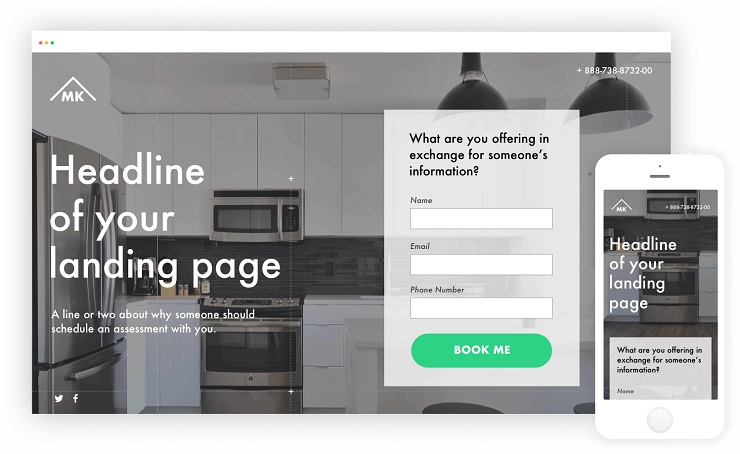
You can include additional information “below the fold,” such as screenshots of your early concepts, testimonials, social media handles, etc. Use a tool like Crazy Egg to see whether visitors are scrolling beyond the fold, and whether it’s worth your time to add more content.
How to Test Your Landing Page(s)
Why limit yourself to one landing page? Testing various landing pages will help you identify whether low interest in your business idea is due to the copy you wrote, or the layout of your page, rather than the product or service itself.
Use services like Instapage or Unbounce to set up and test multiple landing pages. With each landing page variation, change just one variable—the call to action, or the tagline, for example.
Then measure your traffic, review heatmaps of your pages, and calculate the clickthrough rates of each page. Eliminate your worst performing pages and continue to tweak and test your best performers by adding variables such as price, or certain benefits, and seeing how they affect signup rates or time on page.
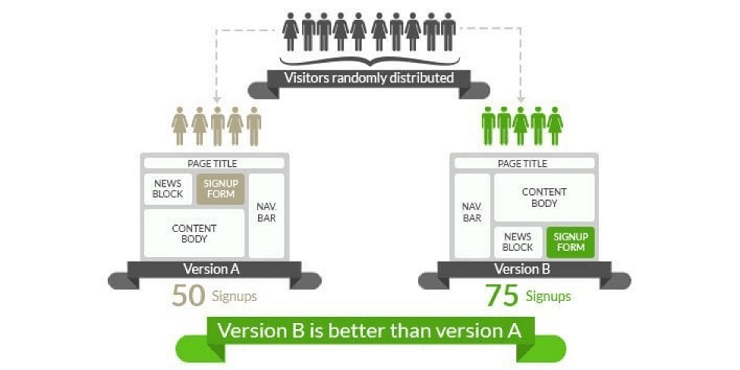
What You’ll Learn From Your Landing Page Experiment
Testing different landing page variables isn’t just about capturing as many email addresses as possible. Running your tests will actually help you figure out the answers to important questions about how to position, market, and understand your business, including:
- Is there enough interest in my idea? Remember, the goal here is to test the basics of your business idea before you spend too much time and money, not to sell a minimum viable product you’ve cobbled together, or even pre-sell orders. Gathering clicks to your landing pages—and, even better, email addresses—will tell you whether people would potentially buy your products if they were available. That’s all you need at this stage. You are just assessing how many clicks your landing page gets or if you are collecting emails from interested people, assessing the number of opt-ins.
- Which benefits do my customers need most? By promoting a single benefit of your business/product idea (will your product be faster than what competitors currently offer? Less expensive? Cloud-based? Will it integrate with common existing tools and apps?) per each landing page you test, you’ll see what is most appealing to your target market. This may help you narrow your focus on providing (and marketing) one specific benefit, such as a faster or less expensive product than ones currently on the market.
- How should I describe the problem my product solves? Remember, your business should solve a problem for your customer, and you may find that one particular benefit, or a more descriptive headline, does a better job of explaining to customers how your solution works. Work out your marketing copy (your CTA, your tagline, and your benefits are all examples of this) on each page and see what descriptions are most effective at driving signups.
- How much are customers willing to pay for what I sell? By playing with pricing tiers and testing one pricing structure per each landing page, you’ll see how far you can go before signups drop off. This might be good information to leave “below the fold” on some landing pages.
2. Set Up Advertising Campaigns to Drive Traffic
Once you set up your landing pages, how will you drive traffic to them outside of your inner circle (who will be predisposed to signing up for your newsletter and thus not helpful for the experiment)? Simple: online advertising.
Posting ads on social media platforms like Facebook (even if they just drive users towards your skeletal landing page) and seeing how many people click through and interact with your offering is a low-cost test you can run to evaluate engagement.
The two main platforms you should use to run and test ads are Google and Facebook, the behemoths of online advertising. You’ll want to run ads on both—even if it’s just $100 apiece to start—since each uses different technologies, and reaches different audiences with various buyer intents.
I will briefly cover some valuable tips below on running Google and Facebook ads. I’ll also link to other resources that will give you more detail on how to run successful campaigns.
Advertising on Google
The most important thing to remember about Google Ads is this: Google users are often actively looking for information. Therefore, write your ad headlines with questions (and answers to those questions) in mind.
What questions will your ideal customer, in your target market, have when using Google? If they’re looking for ways to cut their marketing costs, or save time in the morning before work, write your headlines accordingly (“How can I save on marketing costs?” and “How can I save time before work?” are perfect examples).
Google gets over 3.5 billion searches a day, which means your potential pool of traffic is huge. Learn more about how to write, test, and tweak your Google Ads here.
Advertising on Facebook
On the other hand, Facebook users are scrolling through feeds, consuming content more passively. Therefore, your ads on Facebook need to grab their attention and pull them out of their scrolling patterns.
Best practices for doing that include:
- Writing provocative headlines with clear, engaging copy
- Using images that match or otherwise stylistically sync with your copy
- Utilizing Facebook’s deeper audience targeting tools to limit your demographics to your target audiences
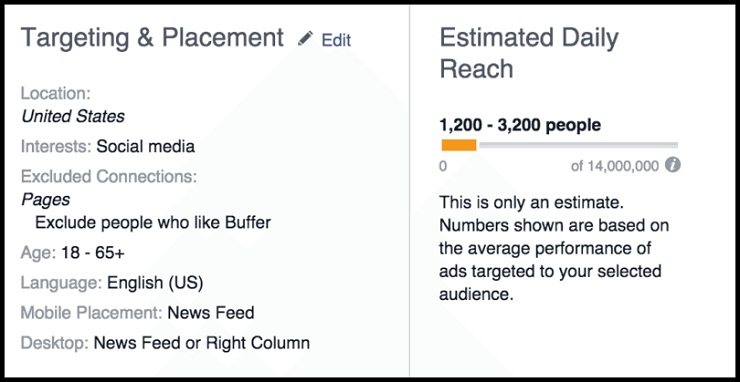
If your business idea is validated and you end up starting your small business, you will almost certainly end up using Facebook ads to capture new leads. That’s when you’ll start thinking more about specific audiences, ad types, and creative copy; for now, your goal is simply to drive traffic to your landing pages.
Best Practices for any Platform
When starting out, you’ll have to invest a little bit of money on each of these platforms in order to get enough traffic to garner actual results. Put $100 behind ads on both Google and Facebook, to start.
When you’re using either platform, test different headlines to see what performs better. You’ll not only increase the likelihood of appealing to users for this experiment, but you’ll gain insight into what might appeal to users when your business does launch down the road.
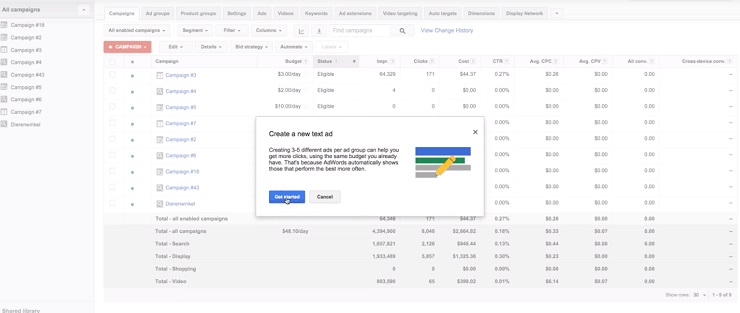
When it comes to the body of the ad, you’ll want good, engaging copy—but in the interest of saving yourself time and effort, feel free to copy your landing page descriptions (which are hopefully well written) for your ads.
Finally, keep your audiences on both platforms relatively broad—don’t limit your audience by factors like geography, interests, or behaviors, for example. You can use Facebook’s audience targeting tools to find a broad audience that you expect to market to (for example, people between the ages of 17-45), but your goal should be to drive as much traffic as possible at this stage of the game.
Calculating Your Click Throughs and Conversions
Once you’ve had your ads running for a few days or even weeks, it’s time to calculate both your click-through rate and your conversion rate.
Your click-through rate, or CTR, is what percentage of people click on your ad after seeing it. According to HubSpot, “Across all industries, the average CTR for a search ad is 1.91%, and 0.35% for a display ad.” Therefore, if your CTR crests 1-2%, you should consider that a sign of major interest from your audience.
Your conversion rate, or CVR, is the percentage of people who arrive on your site and complete the action you want them to—in this case, showing interest by signing up for your newsletter (down the line, it may be to make a purchase). If you have a high CTR but a low CVR, you may need to tweak your landing pages to better reflect what you’re advertising.
A good CVR is also only a few percentage points, so don’t get discouraged by a seemingly low number. But now that you have evidence that people on the internet are potentially interested in your product or service, it’s time to dive deeper.
EXCLUSIVE FREE TRAINING: Successful Founders Teach You How to Start and Grow an Online Business
3. Have Honest Conversations With Your Target Market
After getting a decent response to your ads and landing pages, you might think there is a true need for your business idea. Unfortunately, many entrepreneurs take interest and signups from social media users as the only proof they need that their idea will be a hit. While the landing pages and ads are good indicators, they may lead you to be overconfident.
To ensure you’re pitching the right idea to the right audience, you need to talk with your target market. There are two ways to do that before you start your business:
Interview Your Target Market
Whether by phone or in-person, live conversations with your target market will reveal deeper and more truthful insights about the utility of your business than any other method.
Someone clicking your ad and then signing up for your newsletter tells you they are interested, but it may not be clear exactly why they are interested.
That’s why you should find your customers where you’d expect to find them—conferences, their offices, on the street outside their favorite gym/ice cream shop/clothing store—and ask them if they’d be willing to spend a few minutes answering your questions.
Your questions should lead to a wide-ranging interview that gives you insights into: what emotions drive them to seek a solution to their current problems; what solutions or products they are currently using to solve their problems; and the barriers that might prevent them from purchasing your solution.
Let’s say you have an idea to develop a chat app. Examples of questions you might ask include:
- What tools do you use to communicate in the office?
- Do you use email, chat apps, or talk in-person?
- What issues arise when you do try to communicate with people?
- Would you be willing to pay a certain amount per month to not run into those issues?
Once you get some answers, assess whether or not your business idea address the problems of your target market. For example, did you come into your interviews with a hypothesis and a solution—people talk mostly via chat apps, and their biggest issue is coworkers misunderstanding their directions or tone? If not (maybe fewer people have chat app mixups than you imagined), it’s time to pivot your business idea so you are either addressing a different market with your idea, or addressing a different need for this market that is more pressing.
Use a combination of quantitative measuring—how many of the people you interviewed express your hypothesized issue?—and gut feelings (did people fail to get excited when you described your solution?) to come to a conclusion about your current positioning.
Use Surveys for Additional Insights
Live conversations with people are as time consuming as they are rewarding. For a broader look at the thoughts and feelings of potential customers, use online surveys.
Use a survey builder like SurveyMonkey and populate it with more questions about your potential customers. You want to understand as much as you can about what might convince people to convert into users.
Thankfully, even at this early stage, you should have access to a list of people who converted and became potential customers, via your landing pages.
Send out email surveys to the people on your list. Ask them follow-up questions that might reveal what drew them to your ads and to complete your call to action. Here’s some ideas:
- What looks appealing about your business?
- What changes would they make to what they’ve already seen of your idea?
- What are they using now in lieu of your offering?
- What would they change about that product?
- What would encourage them to make the switch to a new offering?

Though you can offer users a reward in exchange for their feedback, you should be able to garner enough responses by simply asking politely and clearly for their valued insight. For many people, being included in the process is often a reward in itself.
At the end of your survey campaigns, you should have a better sense of whether there is a viable target market, demand for your product, and a willingness to pay.
4. Do Some Research
Conducting research isn’t exactly like testing your business idea, but it is important to understanding whether your concept will work or not in the real world. Due diligence at this stage can help you go from, “This seems like it could work,” to “I’m fairly certain I will succeed in this business.”
Understand the Technical Needs
Depending on what kind of business you want to start, understanding the technical complexity of your idea could be a huge barrier to overcome. It’s a good idea to speak with engineers and other tech experts early on, giving a broad outline of what you want to accomplish.
A product with technical hurdles or challenges won’t be impossible to create, but knowing about possible issues will help you understand them, and how to beat them, when the time comes.
Scan the Competition
In this day and age, it’s difficult to come up with an entirely original idea. And that’s OK—many successful businesses aren’t based on original ideas, but simply executed on an idea better, or at a lower price point.
That being said, you should know who your competitors are in this space, and what they offer, if only so you can explain to possible future investors and customers what makes you a better choice.
You can also use tools like Alexa to check their traffic and see if there are trends you can learn from. For example, recently declining traffic may mean an opportunity for you to step in. It also may mean the niche or market isn’t as robust as you expected.
You can also see what kind of partnerships they have with related outlets (evidenced by a large number of backlinks between the two sites), the keywords they’re ranking for, and opportunities to rank for keywords they are not.
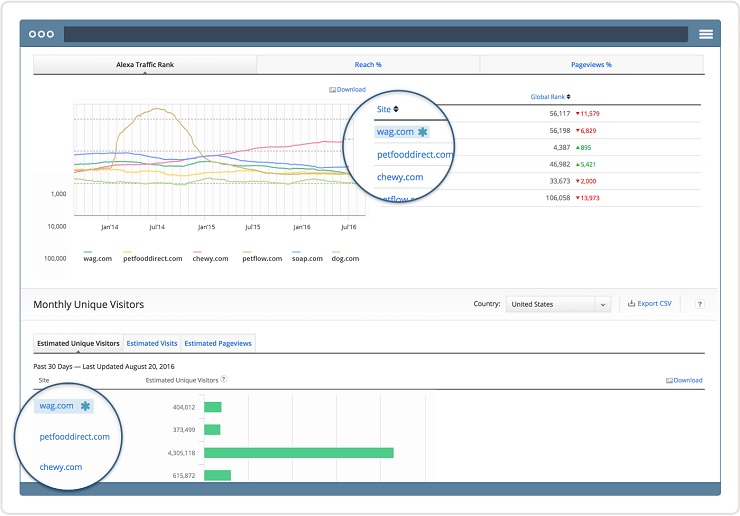
Broad vs. Narrow Audience
Do you want to go after a large audience (with easy to find customers, but lots of competition that may drive down prices) or a niche audience (more targeted customer acquisition methods, but a high willingness to pay among those you do unearth)?
You won’t really “choose” one or the other—you’ll see how many people are in your target audience based on your idea, and go from there. For example, you may only get a few conversions on your landing page, but you’ll notice that those who did convert indicated a high willingness to pay, and pay high prices. That’s a niche market. If you pulled a lot of conversions instead, but many people expressed hesitation about paying, you’ll likely be dealing with a larger but less passionate customer base.
If you’re more interested in catering to a niche or larger market, you may have to tweak your idea accordingly. That may mean lowering the price to appeal to the masses, or zeroing in on just one feature of your business to create a more targeted product for specific use cases.
5. Test Among Your Circles
Your potential customers are the most important audience to listen to. But getting feedback from people you know and trust—your friends and family, your mentors, fellow business owners—can provide helpful perspective on whether this idea is profitable, and whether you’ll have much-needed support from the people in your life.
Polling Your Mentors
What do the people in your trusted professional circle think about your idea? If you don’t have a mentor, you should find one: A recent study showed that a whopping 92% of small business owners “agree that mentors have a direct impact on the growth and survival of their business.”
Mentors are helpful for a variety of reasons, but in the startup stage they are particularly important for helping you recognize issues before they arise, and for providing their perspective on leadership, decision-making, and logistics.
You can also post questions or thoughts on sites such as Quora, business groups on LinkedIn, and other small business forums to gain valuable feedback from your peers. You don’t have to listen to all of it, but you may read something important that you hadn’t considered.
Seeking Support
This is perhaps the most important test of all: How do the people in your life feel about your plan to quit your job and pursue your idea full time?
Not only will you need to have honest conversations with your family and friends about the idea itself—even if they aren’t in your target market and may not understand the need for your business—but you’ll also have to measure their interest in supporting you (perhaps financially, and certainly emotionally).
Make sure that your inner circle is on board, or at least understanding, of your idea. Without a strong safety net at home, you may find yourself falling victim to isolation, fear, anxiety, and burnout—common feelings among entrepreneurs and small business owners. When asking, “Will my business be successful?” start by asking those closest to you.
EXCLUSIVE FREE TRAINING: Successful Founders Teach You How to Start and Grow an Online Business
Test Your Business Idea Before You Quit Your Job
In your time as an entrepreneur, you’ll constantly find yourself balancing questions of risk versus reward. The beginning days of starting your venture are no exception.
That’s why each of the above steps are easy enough to take while you maintain your regular job until you feel safe making the full transition. Even building your MVP or securing financing should wait until you’ve figured out how to test your business idea.
Starting your own business is a big decision. Make sure you do everything in your power to guarantee success before you commit all of your time and resources to it.
Ready to give this a shot? Let us know in the comments if you’re ready to test out your business idea!

